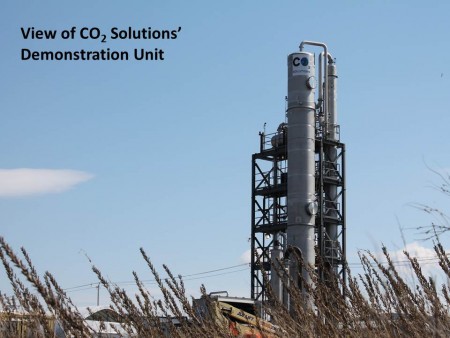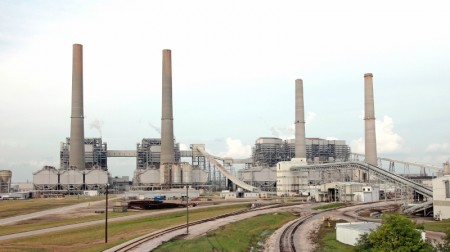February 6, 2016 – Carbon capture and storage or CCS is seen by some to be the technological fix that will help us continue to use fossil fuels to generate energy for the foreseeable future. The vision for CCS has been optimistic. The results, on the other hand, have yielded only a few scattered successes.
In two CCS stories that appeared in the media in the last week, one extolled the potential of CCS combined with natural gas power plants. The second described a new CCS technology for use in the Canadian oil sands.
CCS and Natural Gas
Natural gas-fired power plants are seen as a transitional move away from coal by many countries. Natural gas produces less carbon emissions than coal and its abundance has made it an attractive interim move on the way to a low carbon energy future. But until now CCS has largely been a solution for coal-fired power. And this is one of the reasons that CCS isn’t doing much more than just hanging around.
Why?
Because CCS in coal-fired power plants has been expensive to implement. These are massive facilities to build because of the amount of carbon pollutants produced by coal. The CCS technology impacts the net energy produced by as much as 28%. Extraction of CO2 from flue gases adds significant non-CO2 waste control costs. The liquefying or concentration of the CO2 for transportation adds further infrastructure. The result, very expensive CCS outcomes with the operating Boundary Dam in Saskatchewan costing $1.3 billion U.S. to complete which is relatively cheap compared to a project in Mississippi that will end up costing $6.5 billion (well over budget and two years behind schedule). So many CCS projects related to coal-fired power have been cancelled.
But natural gas is 43% less carbon intensive than coal when you do unit comparisons in terms of the energy produced. A natural gas CCS installation, therefore, would be much smaller and less expensive to implement than coal-fired CCS technology. In one study it was predicted that per unit of energy produced, CCS deployed in natural gas-fired power plants would cost 60% less. So maybe CCS will get a new life as the United States and other countries phase out coal-fired power plants by transitioning to natural gas.
When you consider that the United States and Canada are closing coal-fired power plants as a carbon-reduction strategy, CCS could make the natural gas transition more enduring.
Alberta Climate Fund Awards Quebec Company $15 Million to Implement Enyzmatic CCS Technology
To date trying to capture carbon from oil sands operations has been tenuous at best. Only one project is running, the Quest CCS facility implemented by Royal Dutch Shell. It, like Boundary Dam, has been an expensive proposition, costing $1.35 billion Canadian.
But now a Quebec-based company has invented what it describes as an enzymatic CCS technology for use in industrial applications including the oil sands. The company, CO2 Solutions, in its demonstration plant in Quebec, has shown it can capture CO2 at a cost of $28 per ton. Essentially it works like an industrial lung mimicking the way our own respiratory system eliminates CO2 as we breathe.
The $15 million from Alberta’s Climate Change and Emissions Management Corporation is a non refundable grant and represents half of the estimated cost of building the demonstration oil sands facility. But at even at $30 million, this is CCS at a fraction the cost of operations like the Quest or Boundary Dam.
The announcement states that CO2 Solutions technology will be used with “a major Alberta industrial company” where it will capture 300 tons of CO2 per day and reuse the gas for other commercial needs. Although 300 tons is a small blip the potential for deployment in existing energy generating infrastructure makes this a very attractive technology. And when you consider that the bulk of our carbon dioxide emissions come from approximately 8,000 facilities globally, the inexpensive deployment of CO2 Solutions in these facilities with no retrofit costs to speak of, may prove to be the CCS breakthrough the industry has been seeking.










